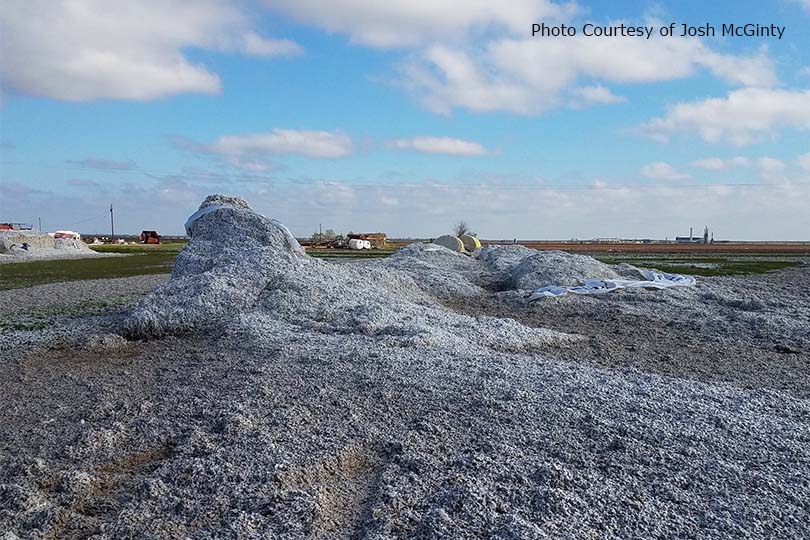Texas agriculture suffered a major blow when Hurricane Harvey made landfall in Texas more than two months ago. The agricultural losses top more than $200 million, according to Texas A&M AgriLife Extension Service economists.
“The effects of Hurricane Harvey will linger for quite some time with our Texas farmers and ranchers,” Dr. Doug Steele, agency director in College Station, told AgriLife Today.
Cotton farmers who were expecting a bumper crop took the biggest hit with $100 million in losses. More than 200,000 bales of cotton lint on the stalk, valued at $62.4 million, were lost. Another 200,000 harvested bales valued at $9.6 million had degraded quality, according to AgriLife Extension economists. There were also widespread losses of cottonseed.
“You either had cotton that was on the stalk ready to be harvested and then taken out by Hurricane Harvey, or you had cotton modules sitting in the field only to have been damaged by wind, rain and/or flood water,” Dr. John Robinson, AgriLife Extension cotton marketing economist in College Station, said. “The Southeast Texas cotton crop was set to be one of the best of all time. You’ve got reports from ginners who have ginning quality concerns related to seed coat problems, poor leaf grade and trash.”
Livestock losses were also significant reaching $93 million. Ranchers worked to move cattle in rising floodwaters, but they had trouble accessing livestock to provide feed or move them due to the torrential rain.
Livestock losses include not only cattle and calves that died during the hurricane, but also industry infrastructure, according to David Anderson, AgriLife Extension livestock economist.
The efforts of many cooperating associations that joined forces with AgriLife Extension to establish animal supply points in the impacted areas providing hay and feed donations helped keep livestock losses from rising. Hay donations also poured in from all over the country.
Economists report hay and feed donations were valued at more than $1.3 million.
Extensive supplies of hay for winter feeding were also destroyed.
“What you must take into consideration is the replacement costs of hay that was destroyed from the high flood waters,” Anderson said. “We are right on the verge of entering winter feeding season and ranchers will have to find replacement hay that averages $63 per round bale. A rancher may typically feed two or more round bales per cow during winter, so even if there isn’t hay available, they will still have to purchase some type of supplemental feed. All of this comes with a hefty price.”
Anderson added the value of fences, barns and animal-handling facilities adds up quickly.
Rice and soybeans also took a hit with $8 million in losses. The U.S. Department of Agriculture lowered Texas rice production 614,000 cwt compared to pre-storm estimates.
AgriLife Extension and USDA Farm Service Agency’s Texas state office have teamed up to produce a series of videos to share disaster assistance program details for farmers and ranchers recovering from Hurricane Harvey. The videos can be found here.


My husband and myself tried to donate 200 rolls of hay. The problem was we could not anyone that would truck it down there. Our rolls of hay weigh 1200-1500 lbs and net wrapped. If you can find someone to truck it you can contact my husband at 903-665-7533 after 6:00 pm
You can try contacting the Texas Department of Agriculture’s Hay Hotline. They might be able to help facilitate transportation. 512-463-9360